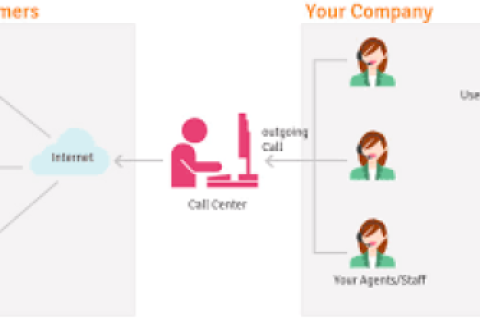In the fast-paced world of customer service, the efficiency and effectiveness of call center processes play a pivotal role in shaping the overall customer experience. This article aims to provide an in-depth understanding of call center processes, their intricacies, optimization strategies, and the technological innovations reshaping the landscape.
Understanding Call Center Processes
1. Defining Call Center Processes
This section establishes a foundational understanding, defining what call center processes entail and their significance in delivering seamless customer service.
2. Core Components of Call Center Processes
Delving into the intricacies, this part outlines the fundamental components that constitute call center processes, from inbound and outbound calls to multichannel support.
The Lifecycle of a Call Center Interaction
1. Inbound Call Handling
This section explores the critical aspects of managing inbound calls, including call routing, queuing, and effective handling strategies for addressing customer queries.
2. Outbound Call Strategies
Discussing outbound calls, this part outlines how call centers initiate proactive outreach, including telemarketing, surveys, and follow-ups.
Multichannel Support and Omnichannel Integration
1. Embracing Multichannel Support
Detailing the evolution of customer communication, this section discusses the integration of multiple channels such as email, chat, and social media into call center processes.
2. The Power of Omnichannel Integration
Exploring the concept of omnichannel support, this part discusses how call centers seamlessly integrate various channels to provide a unified and consistent customer experience.
Call Scripting and Communication Protocols
1. Crafting Effective Call Scripts
This section delves into the art of call scripting, discussing how well-designed scripts enhance agent performance and ensure consistent communication.
2. Communication Protocols
Outlining the importance of standardized communication, this part discusses protocols that guide call center agents in maintaining professionalism and addressing customer needs.
Call Center Technologies and Tools
1. CRM Systems
Exploring Customer Relationship Management (CRM) systems, this section discusses how these tools empower call center agents with customer insights and data-driven decision-making.
2. Automated Call Distribution (ACD)
Detailing the role of ACD systems, this part discusses how automation streamlines call routing, ensuring calls reach the most qualified agents efficiently.
Quality Assurance and Performance Metrics
1. Implementing Quality Assurance
Discussing the importance of quality assurance, this section outlines strategies for monitoring and improving call center performance to meet service standards.
2. Key Performance Indicators (KPIs)
Exploring essential KPIs, this part discusses metrics such as Average Handling Time (AHT), First Call Resolution (FCR), and Customer Satisfaction (CSAT) that gauge call center effectiveness.
Call Center Training and Agent Development
1. Comprehensive Training Programs
Discussing the significance of training, this section explores how call centers invest in ongoing education to equip agents with the skills and knowledge needed for success.
2. Agent Empowerment and Well-being
Addressing agent well-being, this part discusses strategies for creating a positive work environment that fosters employee satisfaction and retention.
Challenges in Call Center Processes
1. Handling Peak Call Volumes
Exploring challenges during high call volume periods, this section discusses strategies for efficiently managing peak times without compromising service quality.
2. Adapting to Changing Customer Expectations
Discussing the evolving landscape, this part explores how call centers navigate changing customer expectations and technological advancements.
Innovations Shaping the Future of Call Centers
1. Artificial Intelligence (AI) in Call Centers
Delving into AI applications, this section discusses how technologies like chatbots and virtual assistants enhance call center processes and efficiency.
2. Predictive Analytics and Data-driven Insights
Exploring the role of data, this part discusses how predictive analytics offer valuable insights for forecasting call volumes and improving overall performance.
Conclusion: Excelling in the Call Center Arena
In conclusion, mastering call center processes is an ongoing journey of adaptation, innovation, and commitment to delivering exceptional customer service. As technology continues to evolve and customer expectations rise, call centers must remain agile, investing in both human capital and advanced technologies. By embracing best practices, leveraging cutting-edge tools, and fostering a customer-centric culture, call centers can excel in providing unparalleled support, ultimately contributing to the success and growth of the organizations they serve.



